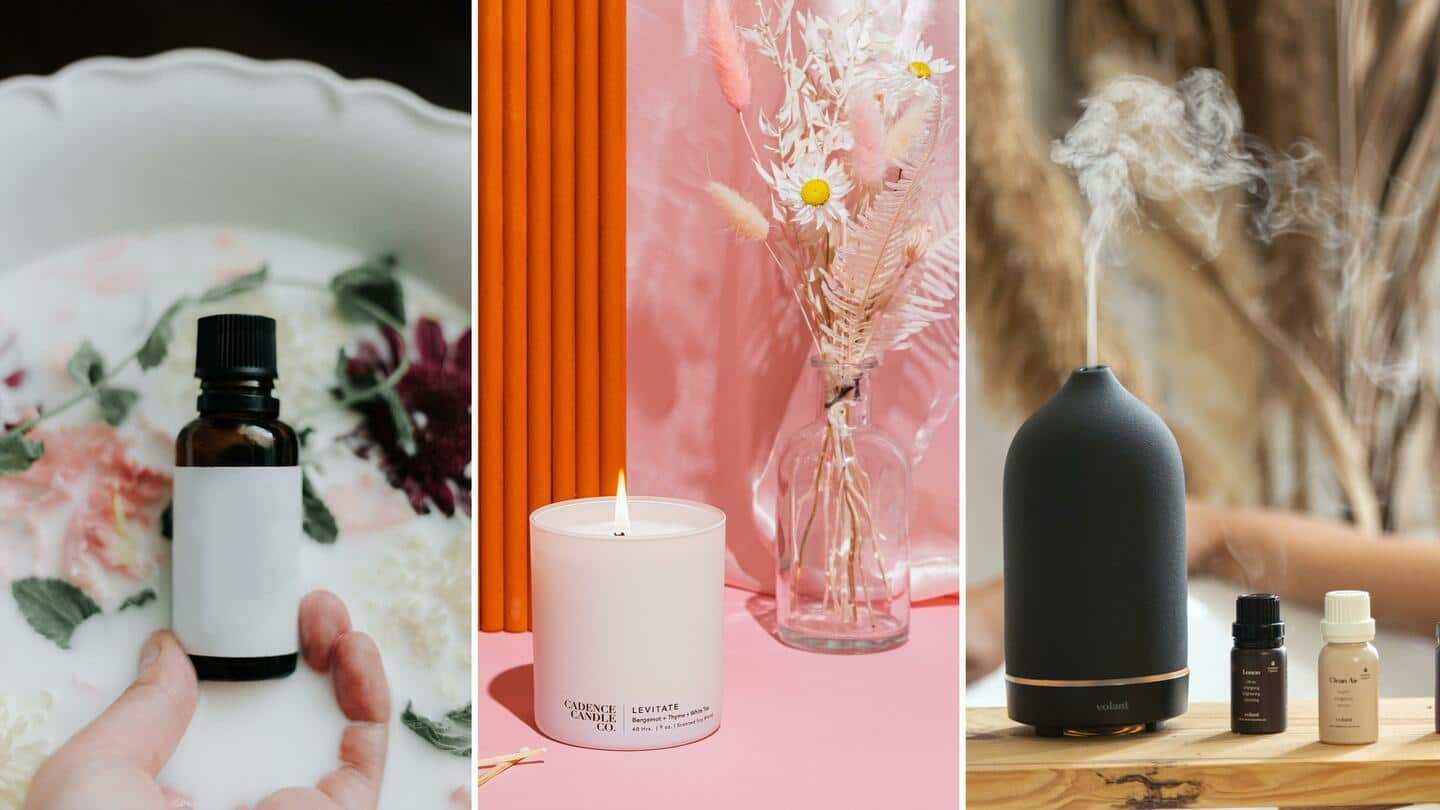
5 different types of air fresheners and their usage
What's the story
Living in a smelly space negatively affects our mood and work performance.
The converse is also true. Living space or a workplace that smells good enhances our mood and productivity.
There are many types of air fresheners, but not all are suitable for every occasion.
To simplify, we have come up with five different types of air fresheners and their usage.
Cover-up
Gels and solid air fresheners
Gels and solid air fresheners continuously release a pleasant cover-up fragrance.
Their gel or solid material eventually evaporates to carry their fragrance into the air.
They can keep a room filled with fragrance throughout the day.
They are ideal for bathrooms and closets or spaces with no electrical sockets.
Some solid air fresheners contain carcinogenic phthalates, so steer clear of them.
Stress-relievers
Essential oils
Essential oils are effective in relieving stress.
When inhaled, the oil molecules directly impact the brain, especially the amygdala, the emotional center of the brain.
They also work as an excellent cover-up for unpleasant odors in the room.
Some scents, such as peppermint and rosemary, are said to improve concentration and memory.
Other scents, such as lavender and jasmine, work great in reducing anxiety.
Ultrasonic waves
Diffusers
Diffusers dispense a mix of water and essential oils into the air through vibrations of a plate which causes ultrasonic waves.
The diffuser then releases a fine mist of oil and water into the air.
These diffusers work great in dry climates, as humidifying diffusers add moisture to the room along with the scent.
They are ideal for living rooms to enhance the ambiance.
Festive atmosphere
Candles
Aromatic candles, along with wax melts, are preferred for their noticeably fragrant smell that creates a festive atmosphere in the room.
They are incredibly unique when it comes to setting the mood for a romantic dinner night.
However, they do not last long and are more about a short-term ambient smell.
Look for non-toxic candles made of soy wax or beeswax.
Aerosol
Aerosol sprays
Aerosol sprays release a mist of liquid aerosol particles into the air when pressed.
They quickly evaporate when released, carrying their fragrance into the air.
Their scent instantly traps odor and replaces them with a stronger, cleaner smell.
While generally considered safe for most users, aerosol sprays may release volatile organic compounds, which can irritate the lungs and increase asthma risk.